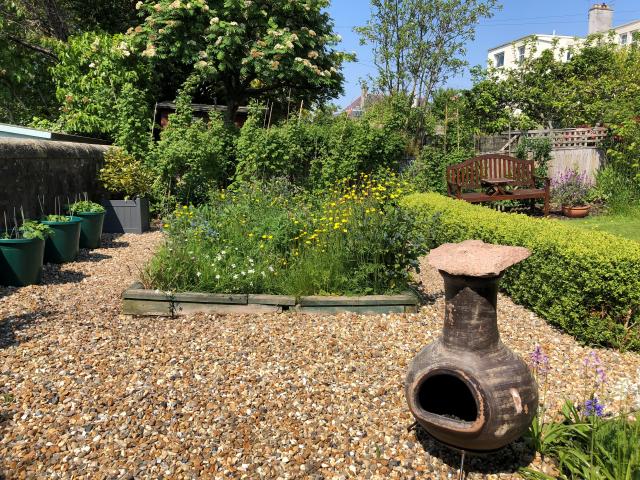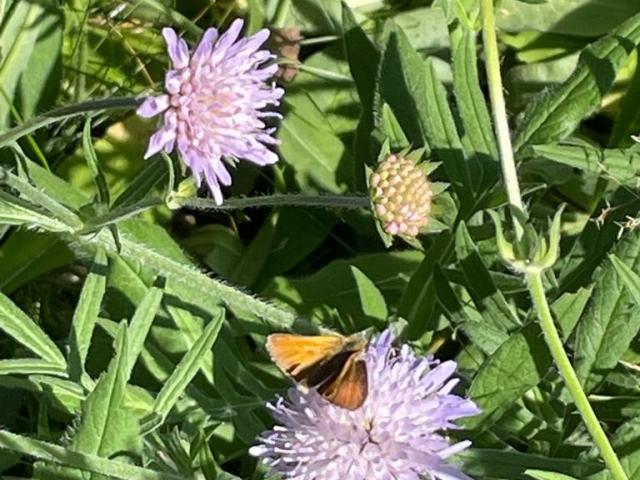Huw Pennell, one of Butterfly Conservation's volunteers, shares with us the story of his wildflower meadow in Corstorphine, Edinburgh.
I set my wildflower meadow up in 2017 when I merged my old vegetable raised beds together at the bottom of our back garden. For the meadow itself I used a combination of plug plants and a wildflower meadow seed mix (including native grasses and wildflowers). I then added more old-fashioned cottage plants such as Hollyhocks, Foxgloves and Lupins, as well as Salvia 'Hot Lips'. The original intention was for the meadow to be a pollinator haven primarily for bumblebees.
Over the last five years I have had to learn to adapt and actively manage the meadow. Because my soil was so rich, grasses, plantain and tall plants like Field Scabious took over and began to crowd out the lower-growing wildflowers. But managing the meadow by cutting it and removing the grass once a year in autumn has seen things shift, and it's become more manageable and diverse over time.
The meadow has been a constant source of pleasure during early summer to early September, as the buttercups and clover give way to Ox-eye Daisies, Knapweed and Field Scabious, with Birds-foot Trefoil a growing presence. We have also seen other 'wild' plants make a home in the meadow - including Green Alkanet, Welsh Poppy and Purple Toad Flax. I am always amazed that during the cold winter months it is so spartan and devoid of life, while come May time it has been transformed back again to a flowering meadow full of wildlife.

Although my interest was piqued by my desire to support the local bumblebee population, my interest has expanded to other pollinators such as butterflies and moths in recent years. We have regular visits of Orange Tips in May, followed by Small and Large White, Peacocks and Red Admirals during the summer. We were thrilled that this year, for the first time, we have had visits from both Small Skippers and Commas.

Since setting up my meadow, three of my friends in the neighbourhood have also set up their own small, urban wild meadows, enabling us to share successes and failures and also help create regular vital stopping-off points for the butterflies and bumblebees of Edinburgh.
Huw Pennell, Butterfly Conservation Volunteer, Edinburgh
Feeling inspired?
Since 1945 the UK has lost 98% of its meadows. This habitat loss, along with climate change, means that our butterflies and moths are in severe decline.
But... it doesn't have to be this way. We are embarking on a campaign to transform the UK into a butterfly and moth-friendly haven and we need you to help. Find out how you can create a Wild Space.

